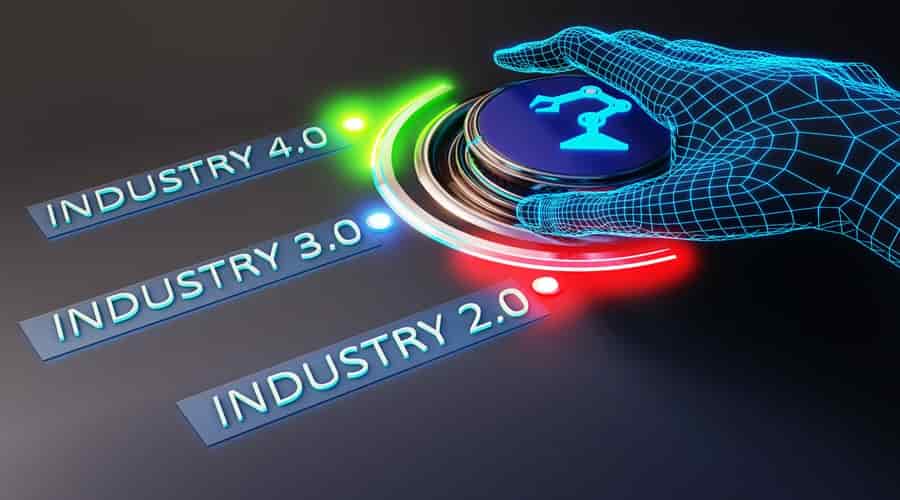
The Evolution of SaaS Security: Staying Ahead of the Curve
The evolution of SaaS (Software as a Service) security has become critical in the tech industry as businesses increasingly rely on cloud-based services to drive their operations. As SaaS(Software as a Service) platforms have grown in popularity, the complexity and sophistication of security threats have also increased, prompting a necessary shift in how security is approached. From the early days of simple security measures to today’s advanced encryption and multi-factor authentication techniques, the landscape of SaaS security has transformed dramatically. This introduction to the evolution of SaaS security will explore how these changes have shaped how businesses protect their data and ensure the integrity of their services in a digitally connected world.
Understanding SaaS Security
Understanding SaaS Security involves comprehending the intricate array of measures and protocols to safeguard cloud-based applications, data repositories, and underlying infrastructure from unauthorized intrusion, data breaches, and various cyber threats. It encompasses a comprehensive suite of strategies, technologies, and procedural frameworks meticulously crafted to uphold the confidentiality, integrity, and accessibility of SaaS solutions and the sensitive data they manage.
Fundamentally, SaaS security is a preventive measure designed to strengthen the digital ecosystem against various threats, such as malicious attacks and unintentional data exposure. To build strong barriers against illegal access and data tampering, it involves implementing strong authentication procedures, strict access rules, and advanced encryption methods.
Historical Perspective
Introduction of SaaS and Cloud Computing:
The advent of software Services (SaaS) and cloud computing has drastically altered the way businesses function.
These technologies gave enterprises unmatched scalability and flexibility, enabling them to optimize resource use and streamline operations.
Emergence of Security Challenges:
However, alongside the benefits came new challenges, particularly regarding security.
In the nascent stages of SaaS adoption, security apprehensions loomed large, a significant impediment to widespread acceptance.
Organizations harbored reservations about entrusting their sensitive data and critical applications to remote servers operated by third-party providers.
Initial Skepticism and Barriers:
Skepticism regarding data security, privacy, and regulatory compliance was prevalent, hindering the rapid adoption of SaaS solutions.
High-profile security breaches and data leaks amplified concerns, reinforcing that cloud-based services are inherently risky.
Evolution of Security Protocols:
Over time, significant strides were made to fortify SaaS security protocols.
SaaS providers responded to the escalating demands for enhanced security measures by bolstering encryption protocols, implementing robust access controls, and fortifying data centers with state-of-the-art security infrastructure.
Gradual Shift in Perceptions:
Organizations gradually shed their apprehensions as these security enhancements took root and proved their efficacy.
Confidence in SaaS providers’ ability to safeguard sensitive data and applications burgeoned, paving the way for broader adoption across industries and sectors.
Maturity and Confidence Building:
The maturity of SaaS technology and the concurrent evolution of security protocols instilled a newfound confidence among stakeholders.
Today, SaaS is a cornerstone of digital transformation initiatives, underpinned by robust security frameworks designed to address the ever-evolving threat landscape.
The Importance of Security in SaaS
Increasing Reliance on SaaS Solutions:
Software as a Service (SaaS) solutions are becoming increasingly popular among businesses of all stripes to improve efficiency, spur innovation, and streamline operations.
This increasing reliance highlights the importance of security in protecting private information and preserving the integrity of vital corporate systems.
Potential Consequences of Security Breaches:
A security breach or data compromise can have serious, far-reaching effects on a business.
Legal ramifications, regulatory fines, and large financial losses from remediation attempts are some examples of these outcomes.
Reputational Damage and Customer Trust:
Beyond monetary losses, security incidents can inflict irreparable harm to an organization’s reputation and brand image.
Instances of data breaches erode customer trust and confidence, leading to customer attrition and diminished market credibility.
Regulatory Compliance Requirements:
Businesses in today’s digital environment must uphold industry norms and standards.
Effectively securing SaaS applications is crucial to adhering to strict data protection laws, such as GDPR, HIPAA, PCI DSS, and others.
Protection of Sensitive Data:
SaaS systems frequently manage private and sensitive data, such as bank records, client information, and intellectual property.
Strong security measures are required to prevent unwanted access, theft, or modification of this sensitive data.
Business Continuity and Operational Resilience:
Maintaining uninterrupted access to SaaS applications is vital for ensuring business continuity and operational resilience.
Effective SaaS security measures help mitigate the risk of service disruptions caused by cyberattacks, ensuring uninterrupted access to critical business resources.
Enhancing Trust and Confidence:
Organizations can instill trust and confidence among customers, partners, and stakeholders by prioritizing security.
Demonstrating a commitment to security best practices reinforces the organization’s credibility and fosters long-term relationships with stakeholders.
Key Components of SaaS Security
SaaS security encompasses various components, including:
Identity and Access Management (IAM):
IAM systems control user access to SaaS applications and data by managing user identities, authentication, and authorization.
This component ensures that only authorized individuals can access sensitive information and perform permitted actions within the SaaS environment.
Data Encryption and Secure Transmission:
Data encryption involves encoding sensitive information to prevent unauthorized access or interception by malicious actors.
Secure transmission protocols, such as SSL/TLS, encrypt data during transit between clients and SaaS servers, safeguarding it from eavesdropping or tampering.
Application Security:
Application security protects SaaS applications from vulnerabilities, exploits, and unauthorized access.
This component encompasses measures such as code reviews, vulnerability assessments, and secure coding practices to mitigate risks associated with software flaws.
Network Security:
Network security safeguards the infrastructure and communication channels used to transmit data between SaaS clients and servers.
Measures such as firewalls, intrusion detection/prevention systems (IDS/IPS), and VPNs help protect against unauthorized access, malware, and network-based attacks.
Incident Response and Disaster Recovery:
Incident response plans outline procedures for identifying, handling, and mitigating security incidents, such as data breaches or service interruptions.
In unanticipated calamities or disruptions, disaster recovery solutions guarantee the availability and resilience of SaaS services and data.
Common Threats and Vulnerabilities
Despite the advancements in SaaS security, threats and vulnerabilities continue to evolve. Common threats include:
Unauthorized Access:
Unauthorized access occurs when malicious actors gain unauthorized entry to SaaS applications or data repositories.
This can result from weak authentication mechanisms, compromised credentials, or inadequate access controls.
Data Breaches:
Unauthorized access to, theft, or exposure of private data in SaaS environments constitutes data breaches.
Software flaws, improperly configured permissions, or deliberate assaults meant to take advantage of holes in security measures can all lead to breaches.
Distributed Denial of Service (DDoS) Attacks:
DDoS attacks overwhelm SaaS infrastructure with a flood of traffic, rendering services inaccessible to legitimate users.
Attackers may exploit vulnerabilities in network infrastructure or leverage botnets to orchestrate large-scale DDoS attacks, disrupting service availability.
Insecure APIs:
Application Programming Interfaces (APIs) are the foundation for integrating and interacting with SaaS applications.
Insecure APIs can expose sensitive data or functionality to unauthorized access, leading to data breaches, injection attacks, or unauthorized data manipulation.
Insider Threats:
Insider threats originate within the organization and involve employees, contractors, or partners who misuse their access privileges to compromise SaaS security.
These threats may arise from malicious intent, negligence, or accidental actions that expose sensitive data or undermine security controls.
Best Practices for SaaS Security
To mitigate the risks associated with SaaS solutions, organizations should adopt best practices such as:
Using Multi-Factor Authentication (MFA):
To improve security beyond passwords, users must authenticate using several factors, such as passwords, biometrics, or one-time codes.
Regularly Updating and Patching Software:
Use the most recent security patches and upgrades for operating systems, dependencies, and SaaS services to address known vulnerabilities and lower the likelihood of exploitation.
Conducting Security Assessments and Penetration Testing:
Regularly assess the security posture of SaaS environments through comprehensive security assessments, vulnerability scans, and penetration testing to proactively identify and remediate security weaknesses.
Encrypting Data at Rest and in Transit:
To prevent unwanted access and interception, encrypt critical data using strong encryption techniques and secure communication protocols when it is in transit (being sent between clients and servers) and at rest (being kept).
Implementing Robust Access Controls:
Enforce strict access controls and least privilege principles to limit user permissions and access privileges based on roles and responsibilities, minimizing the risk of unauthorized access and data exposure.
Emerging Technologies in SaaS Security
The evolution of SaaS security is being driven by emerging technologies such as:
Artificial Intelligence and Machine Learning:
AI and ML technologies are increasingly being deployed to enhance threat detection, anomaly detection, and behavioral analysis in SaaS environments, enabling proactive identification and mitigation of security risks.
Blockchain and Distributed Ledger Technologies:
Blockchain and distributed ledger technologies offer immutable and decentralized platforms for securing transactions, enhancing data integrity, and enabling secure identity management within SaaS ecosystems.
Zero Trust Security Models:
Zero Trust security models operate on the principle of never trusting, always verifying, and requiring continuous authentication and authorization for users, devices, and applications accessing SaaS resources, regardless of their location or network perimeter.
Secure Access Service Edge (SASE):
SASE architectures integrate network security and access controls with cloud-native capabilities. They deliver comprehensive security services from a unified cloud-based platform, enabling secure access to SaaS applications and resources from any location.
Confidential Computing:
Confidential computing technologies provide hardware-based security mechanisms for protecting sensitive data while it is being processed within SaaS environments, ensuring data confidentiality and integrity even in shared computing environments.
Future Trends and Predictions
Increased Adoption of Cloud-Native Security Solutions:
Organizations will increasingly adopt cloud-native security solutions tailored for SaaS environments, leveraging native cloud services and APIs to enhance visibility, control, and protection against evolving threats.
Shift Towards Proactive Threat Hunting and Detection:
Reactive security measures will soon be replaced by proactive threat-hunting and detection strategies using advanced analytics, machine learning, and threat intelligence to identify and resolve security flaws before they worsen.
Integration of Security and DevOps (DevSecOps):
Integrating security into the DevOps pipeline will lead to the DevSecOps paradigm, where security practices are integrated throughout the software development lifecycle to enable continuous security testing, compliance, and remediation.
Emphasis on Security Automation and Orchestration:
There will be an increasing focus on security automation and orchestration to expedite security operations, automate repetitive processes, and react to security crises more quickly and efficiently while limiting the need for manual involvement.
Growth of Managed Security Services for SaaS:
Managed security service providers (MSSPs) will be increasingly vital in securing SaaS environments. They offer specialized expertise, round-the-clock monitoring, and proactive threat mitigation services to organizations seeking to outsource their security operations.
Challenges Ahead
While the evolution of SaaS security has brought significant advancements, organizations still face several challenges, including:
Complexity of Managing Multiple SaaS Solutions:
Organizations grapple with the complexity of managing multiple SaaS solutions, each with security configurations, policies, and compliance requirements, leading to operational overhead and potential security gaps.
Lack of Visibility and Control in the Cloud:
The inherent nature of cloud computing can result in a lack of visibility and control over SaaS applications and data, posing challenges in monitoring user activities, enforcing security policies, and detecting and responding to security incidents.
Skills Gap and Talent Shortage:
The rapidly evolving nature of SaaS security technologies and the shortage of skilled cybersecurity professionals pose challenges for organizations in acquiring and retaining talent with the requisite expertise to manage and secure their SaaS environments effectively.
Scalability and Performance Considerations:
Ensuring the scalability and performance of security solutions in dynamic and elastic SaaS environments presents challenges as organizations strive to maintain optimal security posture without compromising application performance or user experience.
Balancing Security and User Experience:
Organizations must strike the right balance between robust security measures and seamless user experience. Stringent security controls and authentication requirements may introduce friction and hinder user productivity.
Strategies for Continuous Improvement
Regularly reviewing and revising security policies and procedures:
Conduct regular reviews to ensure that security policies and procedures align with changing company needs, legal requirements, and new risks. Policies should be updated as necessary to stay relevant and handle new issues.
Investing in Employee Training and Awareness Programs:
Employees should receive thorough training and awareness campaigns regarding cyber threats, best practices for SaaS security, and their part in upholding a safe computing environment. Encourage a culture that values security so that staff members are empowered to identify and report security incidents.
Collaborating with Security Experts and Industry Peers:
Foster collaboration with security experts, industry peers, and professional organizations to share knowledge, exchange best practices, and stay abreast of emerging trends and threats. Participate in industry forums, conferences, and information-sharing networks to gain insights and leverage collective expertise.
Staying Informed About Emerging Threats and Vulnerabilities:
Stay vigilant and informed about emerging threats and vulnerabilities affecting SaaS environments. Monitor threat intelligence sources, security advisories, and industry reports to proactively identify and mitigate security risks before they manifest into incidents.
Continuously Evaluating and Upgrading Security Solutions:
Continuously evaluate the efficacy of security solutions and technologies deployed in the SaaS environment. Assess their performance, scalability, and alignment with evolving security requirements. Invest in upgrading or replacing outdated solutions to maintain robust protection against evolving threats.
FAQs
What is the evolution of SaaS security?
SaaS security has evolved from basic password protection to advanced encryption and multi-factor authentication.
How has SaaS security changed over time?
SaaS security has shifted towards proactive measures like continuous monitoring and threat intelligence integration.
Why is the evolution of SaaS security important?
It’s crucial because cyber threats evolve, and SaaS applications store sensitive data that needs robust protection.
What are the key challenges in the evolution of SaaS security?
Challenges include balancing usability with security, avoiding emerging threats, and ensuring compliance.
What role does user education play in SaaS security evolution?
User education is vital for promoting secure practices like strong password management and recognizing phishing attempts.
How can businesses adapt to the evolving landscape of SaaS security?
Businesses can adapt by investing in modern security solutions, regularly updating softSoftwared fostering a security-conscious culture.
Conclusion
SaaS security is always evolving due to the dynamic nature of cyber threats and the growing dependence on cloud-based solutions. Organizations may efficiently negotiate the intricacies of SaaS security and protect their digital assets by knowing the historical backdrop, implementing best practices, utilizing emerging technology, and cultivating a continuous improvement culture. The future success and durability of SaaS solutions will depend greatly on adopting a proactive and flexible approach to security.




